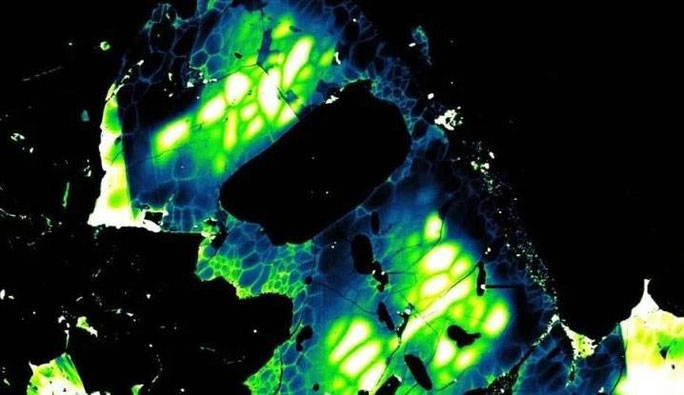Chelyabinsk Meteorite, which once caused terror when it exploded in the skies over Russia in 2013, has now been linked to a massive collision that shattered the Earth and formed the Moon.
A study led by geologist Craig Walton from the University of Cambridge (UK) examined the phosphate minerals in the Chelyabinsk meteorite and found that a collision 4.5 billion years ago had shattered these minerals into small pieces and subjected them to high temperatures, followed by a smaller impact about 50 million years ago.
This ancient collision may have been with Earth itself when this meteorite was still part of a larger parent body.

Phosphate crystals in the Chelyabinsk meteorite – (Photo: Craig Walton)
Previous research has shown that there was a series of high-energy impacts between Earth and celestial bodies around 4.5 billion years ago, particularly between 4.48 and 4.44 billion years ago, according to Science Alert.
These collisions were caused by various large and small objects, including a planet-sized body comparable to Mars. Earth was shattered multiple times, with materials from the young planet mixing with materials from the impactors, some remaining on the surface while others were ejected into space, eventually stabilizing into an orbit and gradually forming the Moon; others “escaped” into space, becoming wandering meteoroids and asteroids.
The parent body of the Chelyabinsk meteorite is believed to have also participated in this event. After the collision, Chelyabinsk was one of the “escapees,” and a series of other events in space brought this “child of death” back into the picture in 2013. Although Chelyabinsk exploded in the sky, its shockwave caused extensive damage.
The collision between the parent body of Chelyabinsk and Earth, along with numerous ancient impacts, is thought to have been influenced by the migration of giant planets like Jupiter, Saturn, Neptune, and Uranus. Initially, these planets formed farther from the Sun but gradually moved closer, causing significant gravitational disturbances in the inner solar system, where the small rocky planets, including Earth, reside.
However, it is possible that all the horrific events of the early solar system contributed to the creation of a habitable planet with sustainable life evolving over billions of years.
This research was recently published in Communication Earth & Environment.

















































